The system
Area served
Our public transit service covers the city of Gatineau, including the Buckingham, Masson-Angers, Gatineau, Hull and Aylmer sectors, as well as downtown Ottawa.
Riders can also transfer between the OC Transpo and Transcollines systems at several stops. Check Travelling with OC Transpo and Transcollines (Infos pratiques/services complémentaires/Voyager avec… ) to find out more.
Infrastructures
- 1,781 stops
- 256 bus shelters
- 12 stations
- 16 park-and-rides
Réseau
- 2,200 departures daily
- 863 km-long system
- 39.8 km of reserved lanes
- 15,559,797 km covered in 2022
Types of routes
Regular routes
Regular frequency service 7 days a week*.
Identified in black on the bus stop sign.
*Some routes run 5 or 6 days a week.
Peak period routes
Service during peak periods, that is to say:
- Monday to Friday;
- between 4:45 and 9 a.m.;
- between 2:30 and 6 p.m.; and
- in the major traffic direction.
Identified in purple on the bus stop sign.
Local routes
Serve neighbourhoods to a transfer point, such as a Rapibus station or a park-and-ride. The transfer point provides access to other routes heading to the Hull sector and/or Ottawa downtowns.
The route destination is indicated to the right of the route number on the bus stop sign.
Bus stop sign

- Bus stop number
- Infobus service available by text messaging or by phone. Indicates when the next two buses on that route will be reaching the stop.
- Text 819778, and indicate the 4-digit bus stop number in the body of the text (identified as A) (Standard messaging rates may apply).
- Route number.
- Peak period routes are in purple.
- Regular routes are in black.
- Route destination
- Guaranteed accessible route. Every bus on that route has an access ramp and most of the stops are accessible.
- The stop is accessible to people in wheelchairs and with reduced mobility.
Bus stop signs on the Rapibus platforms
Located along the Rapibus corridor, they indicate the boarding points for the Rapibus routes.
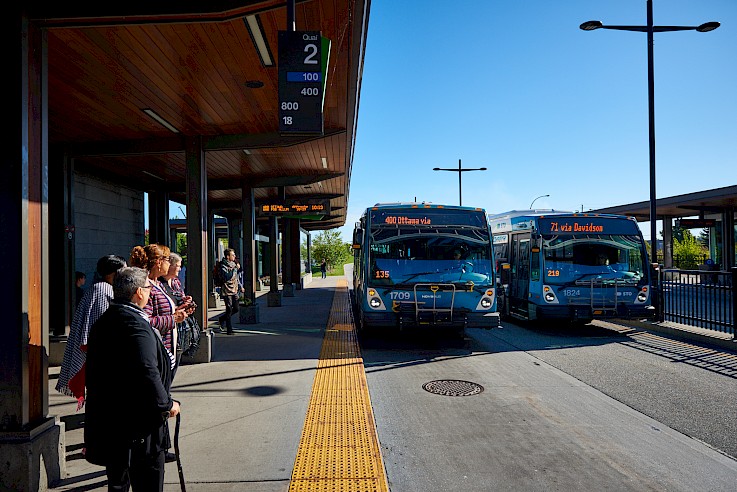
Bus stop signs at local platforms
Located at the local Rapibus station platforms, they indicate the boarding points for the local routes.

Reserved lanes
Reserved lanes are strictly for use by buses, taxis and carpooling. The STO has 39.8 km of reserved lanes, 14.8 of which are along the Rapibus corridor.
Identification of reserved lanes
On the ground
Lozenges and dashed double lines
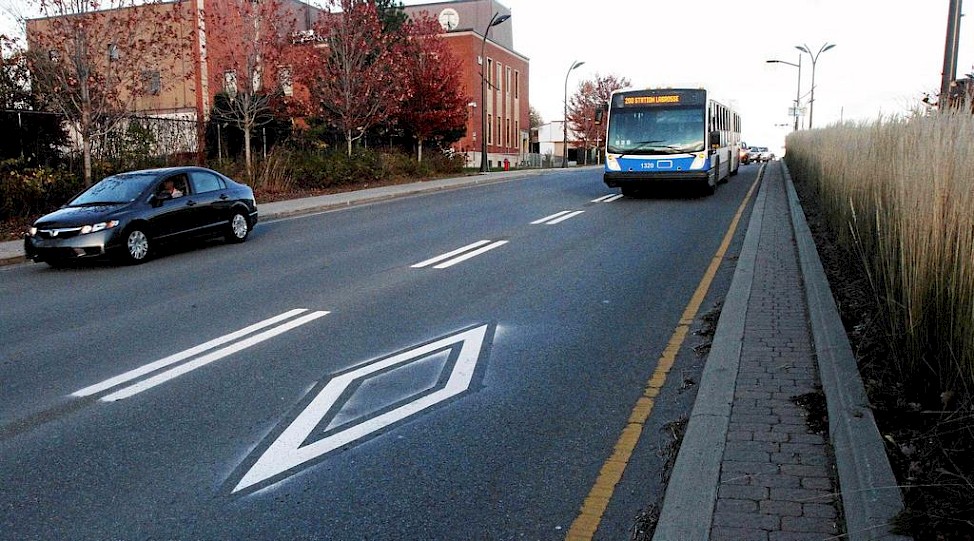
Signs
Indicating the periods and authorized types of vehicles.
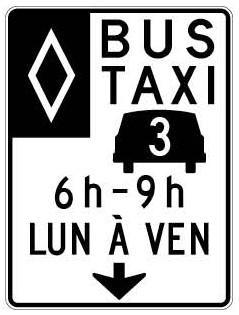
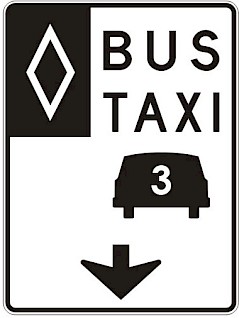
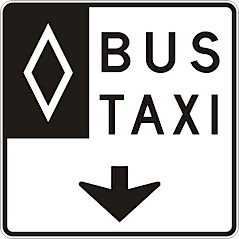
Transit signal priority
Enables buses to more easily merge into traffic. A white vertical straight light against a black background is added to the regular traffic light. These signals are activated a few seconds before the green light.
Public transit reference guides
Guide des principes d'aménagement et d'accessibilité universelle
This document underscores the importance of taking public transit into consideration in:
- planning;
- land use planning;
- neighbourhood development; and
- new construction projects.
It aligns with one of the goals in the STO’s 2017-2026 strategic plan, which is to play an active role in land use planning and development to promote an efficient and accessible public transit system.
Guide de conception et de normes de services
This document defines and standardizes the review process for the services offered. It covers the fundamental aspects of planning the public transit service, including:
- minimum service levels;
- supply management; and
- information for customers.
It serves to guide us in the planning, review and adjustment of our services.
A review of the future of the system and its complementarity with active transportation took place in spring 2022. Consult the full report of the public consultation - Ensemble, définissons la mobilité de demain